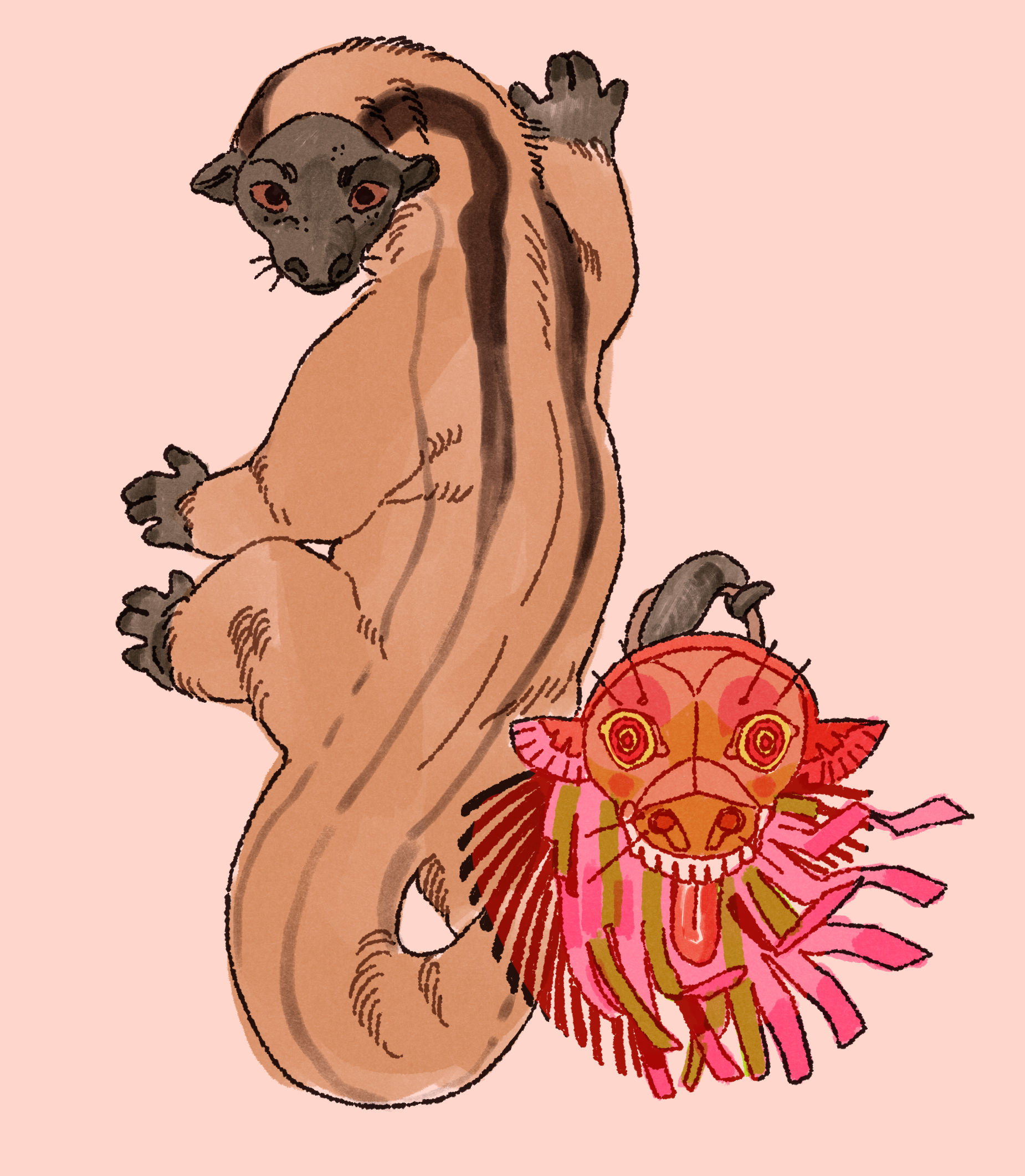Roc Masks
One of the most pressing threats to a kipsang's safety when travelling on the ground are birds of prey. Particularly, rocs. They have discovered an effective way to ward the birds is with the use of "masks" held by the tail. These masks are usually made in the likeness of kipsang faces, with exaggerated features, bright, flashy colors, and most importantly a set of striking eyes. Streamers or tassels add to the visual effect. When raised quickly, the display will (hopefully) startle an attacking bird, or at least stun it for a moment.
All masks are made hollow for practicality, which has led to the development of defensive fillings. Some masks are filled with powders, thorns, quills, sharpened sticks, or any other sort of irritant intended to harm a roc when it strikes the mask, and discourage it from attacking further. There are also varieties with reflective materials that work best in bright sunlight and make the mask challenging to look at without light flashing in the eyes. There are even masks fashioned after rocs themselves.
Despite the moniker these masks work well on other would-be predators.
Myths and legends have cropped up around the use of these masks. Heroes and figures associated with protection appear in stories where they are described with two faces, or heads.
Traditions vary by clan and even individual kipsang, but some consider each mask to have a sort of character to them. It is not uncommon to mourn the loss of a mask that has been struck or discarded to save one's life.

Caught just outside the safety of the jungle treeline, a kipsang defends themself from a plains roc with a high-contrast roc mask, causing the bird to stall and straighten warily. (By Kell)

A kipsang displaying their mask with a somewhat menacing expression. (By Searrach)
Return to Culture and Technology
